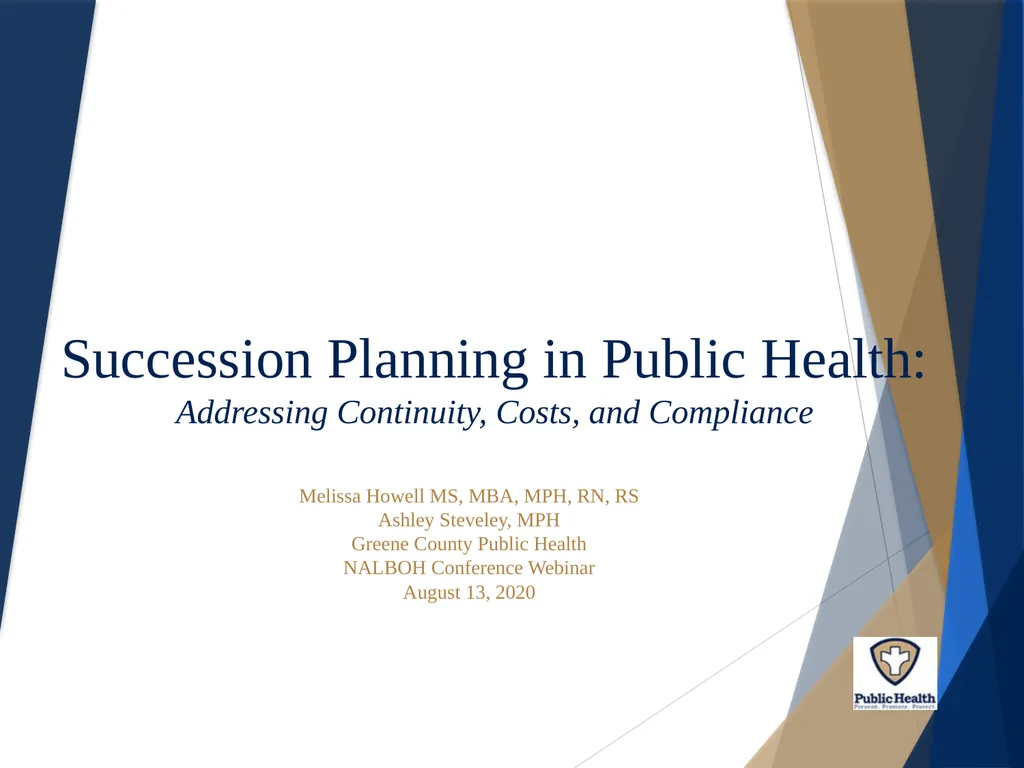
Succession Planning in Public Health: Addressing
Author: aaron | Published: 2025-07-16
Description: Succession Planning in Public Health: Addressing Continuity, Costs, and Compliance Melissa Howell MS, MBA, MPH, RN, RS Ashley Steveley, MPH Greene County Public Health NALBOH Conference Webinar August 13, 2020 Objectives Describe a
Download Presentation
Download the PPT/PDF: Download
Transcript:
Loading transcript…